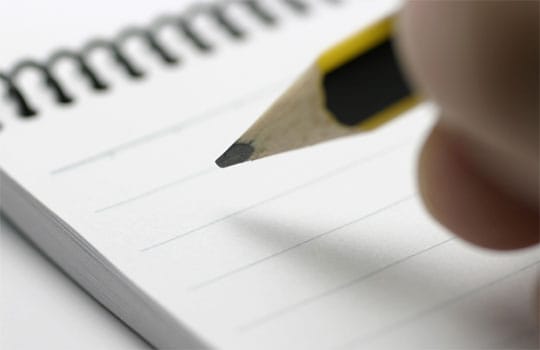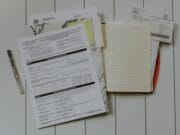There’s a pretty good reason why people admire the writers so much. Not everyone is blessed with the amazing talent to make an ordinary thing sound so interesting, with nothing but an impeccable use of words. But did you ever wonder what is so special about these writers? They are just like any one of us, but the majority of us don’t know how to create magic with words.
If you got a knack for writing, you may already know that the key to a remarkable piece of content is the thought process behind it. Whether you are willing to run a blogging website or want to take up writing as a professional, you need to think on the similar lines of a professional writer.
Well, every writer has his/her own unique way of looking at things, and if you want to join the league, you will also need to develop your a particular approach towards the content. Perhaps, these following tips will be helpful in that context.
1. Learn it from the best:
 How would you learn to think like a professional writer if you never really check out the works of other writers? Before you get yourself involved in other skill-enhancing activity, acquaint yourself with the works of the finest writers of our time. Study the works of Salman Rushdie, Stephen King, Don DeLillo, Cormac McCarthy and their contemporaries.
How would you learn to think like a professional writer if you never really check out the works of other writers? Before you get yourself involved in other skill-enhancing activity, acquaint yourself with the works of the finest writers of our time. Study the works of Salman Rushdie, Stephen King, Don DeLillo, Cormac McCarthy and their contemporaries.
It is not mandatory to follow the contemporary writers only. Going through classic literature can also provide you with insight into the thoughts of William Shakespeare, George Bernard Shaw, Oscar Wilde, Mark Twain and some of the greatest writers of all time. Being familiar the works of these maestros can certainly help you understand the way a writer sees the world.
Recommended for you: 10 Website Copywriting Tips That Will Increase Your Search Ranking.
2. Observe the things around you:
 To think like an established writer, you don’t always need to focus on extraordinary ideas. Even the simplest things around you can help you contribute to your narrative. If you have read enough literature in your life, you must have noticed how beautifully the writers describe the small details of a character, a setting and even an event.
To think like an established writer, you don’t always need to focus on extraordinary ideas. Even the simplest things around you can help you contribute to your narrative. If you have read enough literature in your life, you must have noticed how beautifully the writers describe the small details of a character, a setting and even an event.
To generate that kind of impeccable writing ideas, you need to be observant about the things that are happening around you. Even the most common of things can offer you amazing ideas to pursue. If you take a look at the writings of William Wordsworth or P.B. Shelly, you may find how a normal, everyday scenario can be described in the most brilliant way possible.

3. Share what you think:
 Literature, magazine articles, journals, and even the online blogs are good for inspiration, but working on the existing ideas is not going to help you become a better writer. Most of the finest writers in the world focus on their unique ideas. Even if you are writing a factual piece, give it your own unique touch to make it stand out from the rest.
Literature, magazine articles, journals, and even the online blogs are good for inspiration, but working on the existing ideas is not going to help you become a better writer. Most of the finest writers in the world focus on their unique ideas. Even if you are writing a factual piece, give it your own unique touch to make it stand out from the rest.
Writing fiction is easier in this context because it allows you to explore your imaginary powers and relies very little on the facts. However, fiction does not always mean exploring your deepest fantasies. Even fictions can be based on real-world facts. So always build on your own perception of things, instead of following the footsteps of the other writers.
4. Prioritize writing over everything else:
 If you wish to become an established writer, you cannot just treat this whole thing as a hobby. You need to put your undivided attention to writing in order to excel as a serious writer. Spend enough amount of time every day to think what you want to write and how you want to present it to the readers. A clear objective does half of the job for you.
If you wish to become an established writer, you cannot just treat this whole thing as a hobby. You need to put your undivided attention to writing in order to excel as a serious writer. Spend enough amount of time every day to think what you want to write and how you want to present it to the readers. A clear objective does half of the job for you.
We often lose our precious time on unnecessary things that rarely contribute anything valuable to our lives. Use that time to generate new ideas for your writing. For the millennials, social media networks consume a significant amount of time. If you are going to use Facebook or Twitter anyway, then observe the trend and see what new you can find. Ideas can come from anywhere.

5. Be confident about your writing:
 A little sprinkle of confidence can take your writing to a whole new level. If you don’t feel confident about the things you write, it is never going to work. Whether you want to write a piece for your blog or want to prepare the first draft for your upcoming project, you need to declutter your mind and focus on the writing part with confidence.
A little sprinkle of confidence can take your writing to a whole new level. If you don’t feel confident about the things you write, it is never going to work. Whether you want to write a piece for your blog or want to prepare the first draft for your upcoming project, you need to declutter your mind and focus on the writing part with confidence.
People can teach you how to write, but there’s no step-by-step guide to build your confidence. Perhaps being aware of what you want to write can boost your confidence to a certain extent. Make sure have enough time in your hand. Being chased by a stringent deadline often breaks one’s confidence. Usually, a person feels confident about his work when the odds are in his/her favor.
You may like: How to Write a Blog Post and Go Viral on Social Media.
6. Use the resources well:
 50 years ago, people did not have access to sophisticated technologies that we are seeing today. You have the internet that offers limitless knowledge about anything that has been documented. Earlier, people had to rummage the whole library and even the archives to find a single piece of information.
50 years ago, people did not have access to sophisticated technologies that we are seeing today. You have the internet that offers limitless knowledge about anything that has been documented. Earlier, people had to rummage the whole library and even the archives to find a single piece of information.
Since you have been blessed with the advanced technology of the 21st century, you should use it to your advantage. As mentioned before, even the online blogs and articles can be your source of inspiration. And since internet gives you the platform to publish your writing and reach a massive number of readers, you should definitely utilize those opportunities to see how well do you perform as a writer.
7. Be open to criticism:
 A writer always learns from his previous mistakes, and that’s what helps him/her to grow as a professional. But if you turn a blind eye to all the criticism, how will you learn about the flaws in your writing? To ensure you get enough feedback and some constructive criticism, it is important to use the online platforms to present your work to the pool of online readers.
A writer always learns from his previous mistakes, and that’s what helps him/her to grow as a professional. But if you turn a blind eye to all the criticism, how will you learn about the flaws in your writing? To ensure you get enough feedback and some constructive criticism, it is important to use the online platforms to present your work to the pool of online readers.
Before you can aim for becoming a professional writer, it is always better to test your potential to the online readers. In fact, online content has more reach nowadays. Start your journey as a blogger, and keep improving your skills by working on the areas where you lack conviction. Even the most celebrated authors these days write for online platforms. Why should you miss the opportunity?

8. Spend some alone time:
 Solitude is one of the major elements that allow a writer to work on his/her thoughts. Being surrounded by distractions is not exactly the ideal setting for indulging in deep thoughts. The finest of ideas come to us when we are alone. This is no coincidence that you found some of your unique ideas while taking a shower.
Solitude is one of the major elements that allow a writer to work on his/her thoughts. Being surrounded by distractions is not exactly the ideal setting for indulging in deep thoughts. The finest of ideas come to us when we are alone. This is no coincidence that you found some of your unique ideas while taking a shower.
Well, you don’t need to take a shower every time you need a fresh idea. Even a room that is isolated from all the distractions (crowd, electronic devices, comic books, etc.) can be a great place for your work. Limit human interactions when you are engaged in the writing process. Even a small interruption can affect your work.
You may also like: 7 Excellent Productivity Hacks for Procrastinating Writers.
Final Words

There is a huge distinction between knowing how to write and being a writer. In fact, there are several stages of evolution that take place in between. So if you think you can become a professional writer in one day, that’s not going to happen. Learning is a continuous process, and it demands a lot of hard work. So know what you are getting yourself into.
A writer is, in every essence, an artist who portrays the beauty (and the other aspects) of life with words. Filling the shoes of such an artist is no easy job. The aforementioned suggestions may help you make progress in the right direction, but you need to destroy all your inhibitions if you want your thought process to match the same of a professional writer.
This article is written by Sienna Brown. She is an Academic Blogger based in Melbourne and Associated with My Assignment Help. She started writing and blogging from a young age and most of her write-ups are based on real experiences and self-taught.





